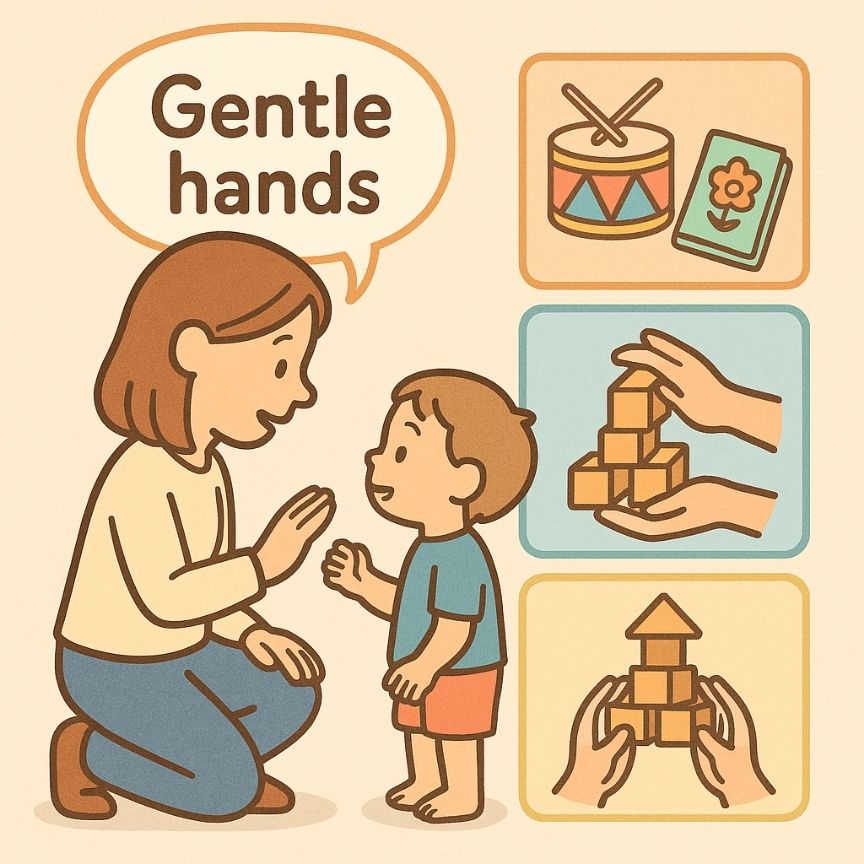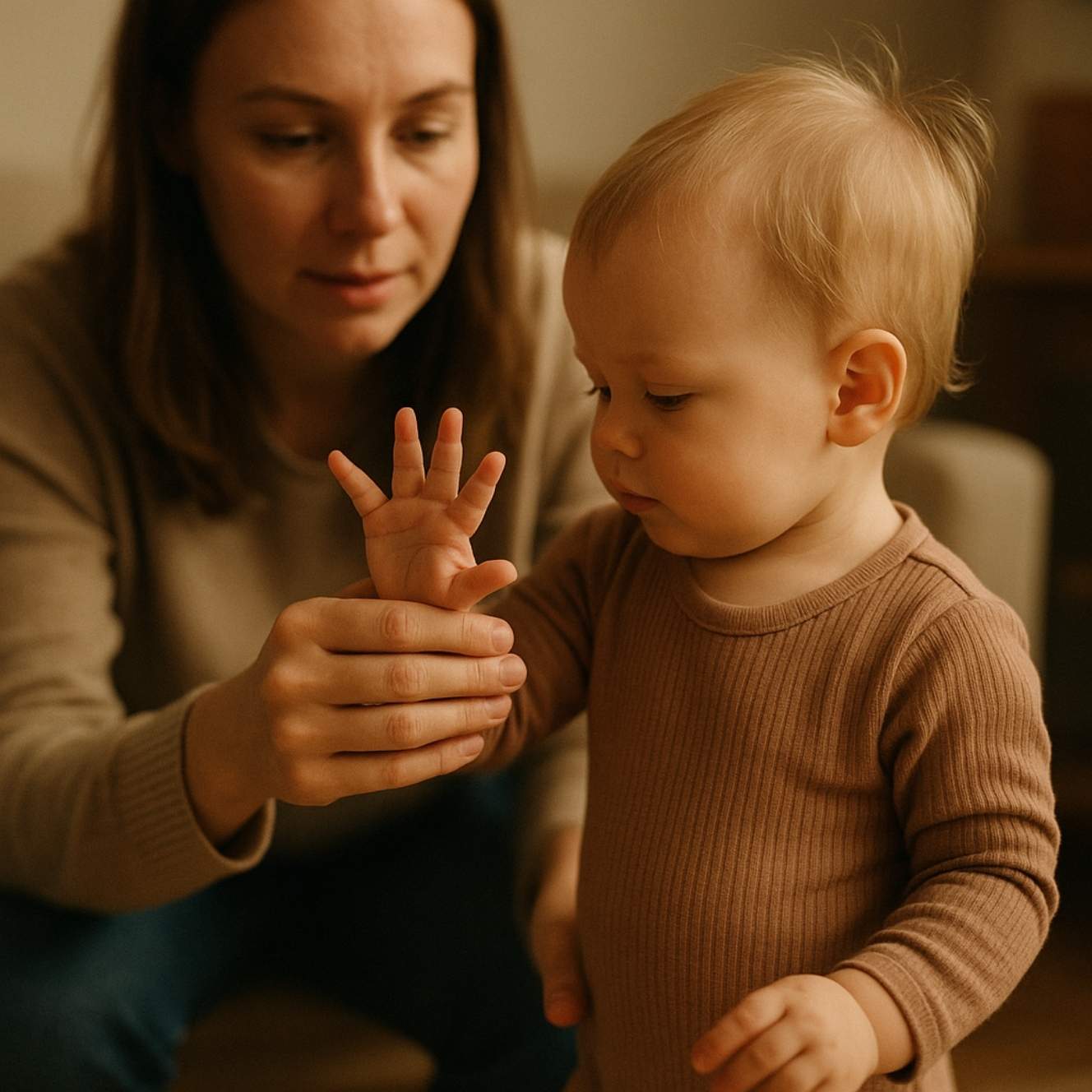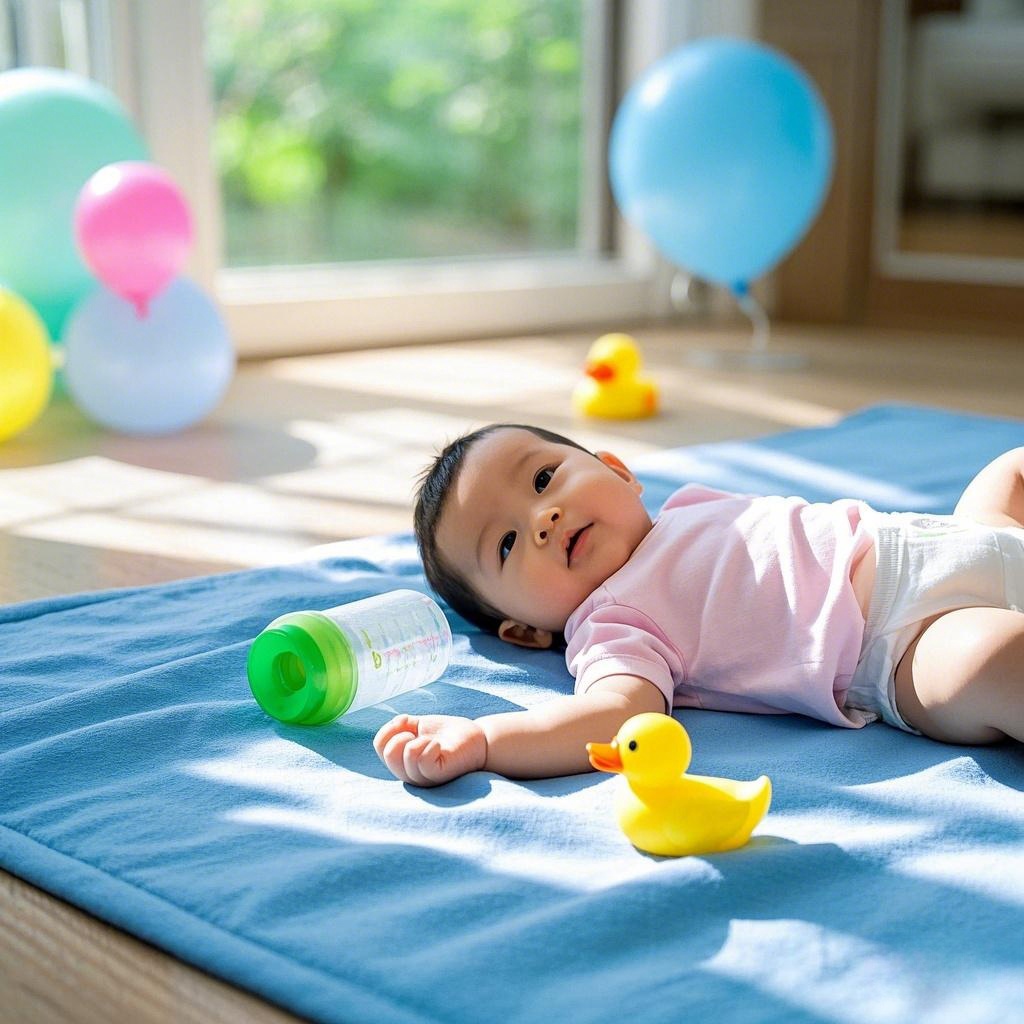Introduction
A tiny hand suddenly swings out and lands on your cheek. The sting disappears in seconds, yet the surprise and worry last much longer. For many parents, seeing an infant who can barely toddle resort to hitting feels both baffling and alarming. Isn’t aggressive behavior supposed to emerge later, after children understand the power of a push or punch? In reality, an occasional slap or swipe at age one is a common part of development. Limited vocabulary, surging emotions, and a brand-new sense of agency collide, and those impulses look for the quickest exit—often through the hands. This article unpacks why toddlers hit, what it means for their growing brains, and how caregivers can guide them toward gentler choices.
1. Understanding Developmental Behavior at Age One
During the twelfth month of life, a child’s world expands at breakneck speed. Motor skills blossom—first shaky steps, then bold climbs—while receptive language outpaces expressive speech. Inside this rapid growth, self-control lags behind curiosity. A one-year-old may grasp the concept of “no” but lack the neural wiring to stop mid-action. Hitting, then, is less a sign of malice and more a blunt instrument of communication. A smack can say I’m excited, I’m frustrated, or I need space, especially when words are scarce. Cognitively, toddlers live in the moment; impulse and action are nearly simultaneous. Emotionally, they are beginners at regulation: their tiny prefrontal cortex doesn’t yet coordinate feelings with socially acceptable responses. When parents view hitting through this developmental lens, the behavior feels less like a failure and more like an unrefined milestone—one that guidance and time will polish.

2. Common Reasons Why Toddlers Hit
Why does a happy child suddenly strike? Often the trigger is frustration—blocks won’t stack, the snack runs out, or a sibling grabs a toy. Overstimulation is another spark: a noisy birthday party or bright supermarket aisle floods senses already on high alert. Tiredness lowers tolerance, so a slap before nap time can echo the adult tendency to snap when exhausted. Attention seeking also plays a role; even a negative reaction proves that hitting works to get grown-ups to engage. Physical discomfort matters, too. Teething pain throbs unpredictably, and a quick swat can release pent-up tension. Lastly, emotional surges arrive without warning; joy so big it bursts may look like a playful pat that lands harder than intended. Recognizing the root cause behind each swing helps parents tailor their response—soothing overtired bodies, simplifying chaotic settings, or offering tactile alternatives like a chew toy for sore gums.

3. How to Respond Calmly and Effectively
The first rule of handling a hit is to stay composed. A sharp gasp or stern shout may stop the behavior in the moment, but it also escalates stress hormones on both sides, making learning harder. Instead, crouch to eye level, keep your voice low, and use concise phrases: “Gentle hands,” “Hitting hurts,” or “Let’s try a soft touch.” Lightly guide the child’s hand to stroke your arm or a stuffed animal, offering an immediate replacement action. Consistency is crucial; every caregiver should echo the same cue words and gestures so the lesson sticks. It also helps to narrate feelings: “You’re mad because the toy broke. Let’s fix it together.” Redirection works wonders—switch to a sensory bin, sing a favorite rhyme, or take a short walk to reset overwhelmed nerves. Over time, calm repetition teaches toddlers that while emotions are welcome, hitting is not the right exit path for them.

4. Teaching Empathy and Emotional Language
Even before full sentences form, toddlers can learn the building blocks of empathy. Label emotions in real time—“You look upset,” “Your friend is sad”—and link those words with facial expressions and tone. Picture books featuring diverse feelings become miniature empathy gyms, letting children rehearse kind responses in a low-stakes setting. Role-playing with plush toys also helps: tap one bear, then model a hug and say, “Bear hurts, gentle now.” Parents’ own behavior is the loudest lesson. Offer apologies when you bump into furniture, speak kindly to pets, and demonstrate deep breaths during stressful moments. Small rituals—thanking your child for a soft touch, celebrating a calm choice—reinforce prosocial acts and build neural connections that favor cooperation over aggression. The goal isn’t perfection but incremental progress: each time a toddler pats instead of hits, those empathy circuits strengthen.

5. When to Worry: Red Flags to Watch For
Most bouts of toddler hitting fade as language and self-regulation mature, but some patterns warrant closer attention. Persistent aggression that escalates after age two, targets animals, or includes additional behaviors like biting and head-banging may signal deeper challenges. Lack of response to consistent guidance—no slowing, no softer touches—also deserves monitoring. Consider the context: children with sensory processing differences might lash out when fabrics feel scratchy or lights glare, while developmental delays can limit comprehension of social cues. Family stress, from a recent move to parental burnout, can amplify aggression as well. Trust your instincts; you know your child’s baseline best. If hitting intensifies, interferes with play, or leaves other children fearful, seek input from a pediatrician, occupational therapist, or child development specialist. Early support can reveal underlying issues and provide tailored strategies that restore harmony at home and confidence in your parenting.

Conclusion
A fleeting smack from a one-year-old can feel jarring, yet it usually reflects age-appropriate exploration rather than deliberate aggression. With limited words and soaring emotions, toddlers test boundaries in the quickest way they know. By staying calm, setting consistent limits, and teaching tiny doses of empathy, caregivers transform those impulse-driven swats into moments of growth. Occasional hitting at this stage is normal, but your patient guidance helps turn busy hands into gentle ones—and lays the groundwork for healthier emotional expression in the years ahead.






